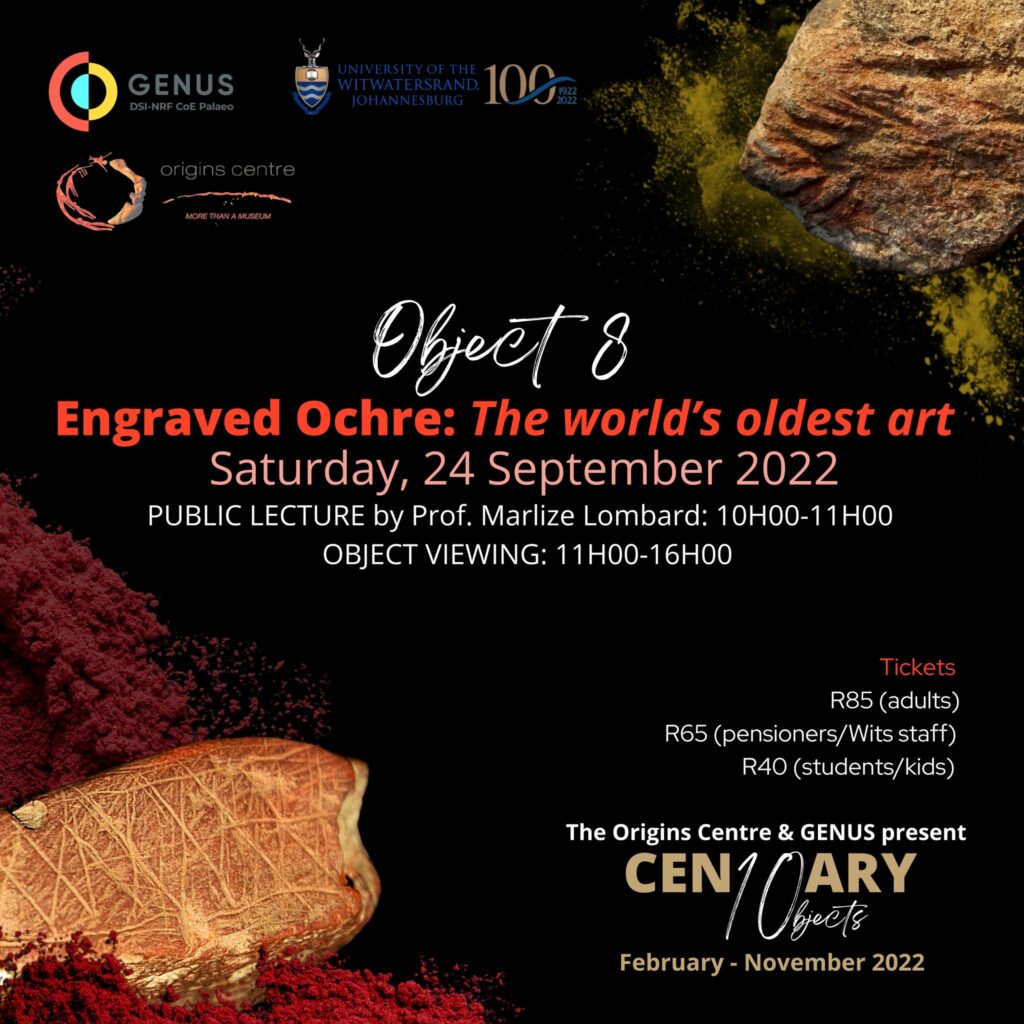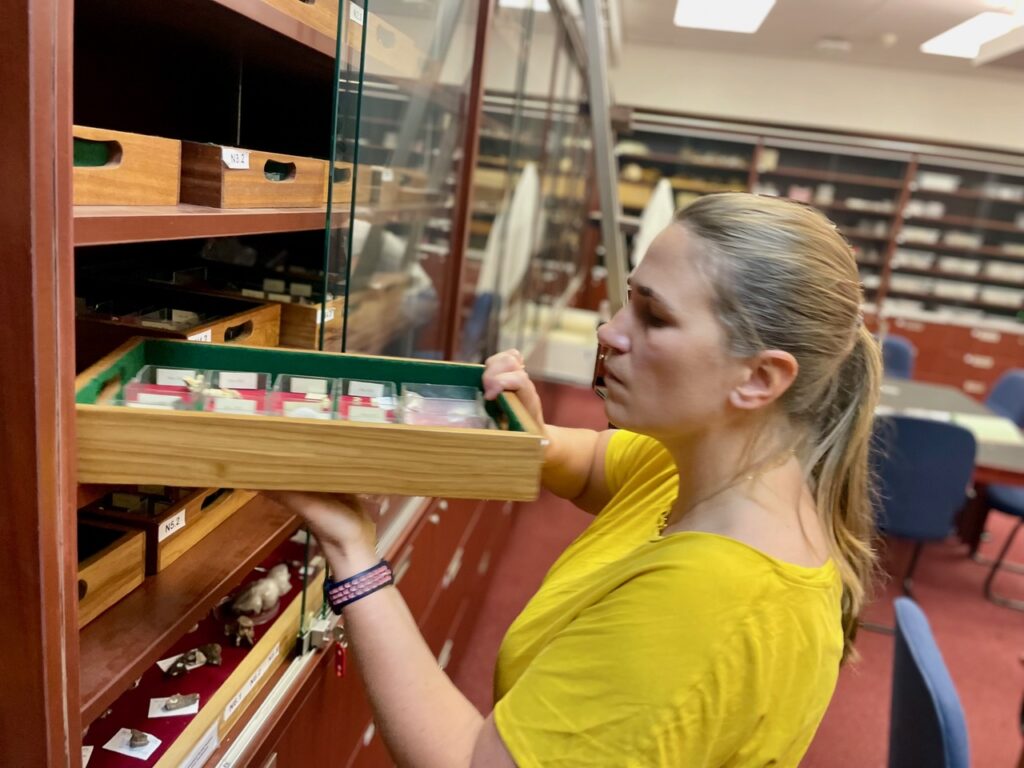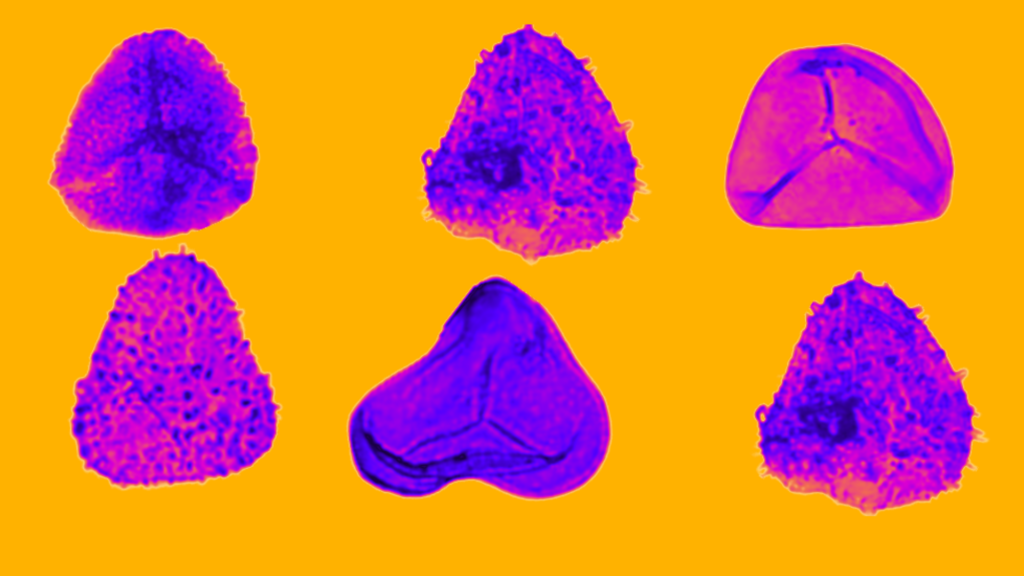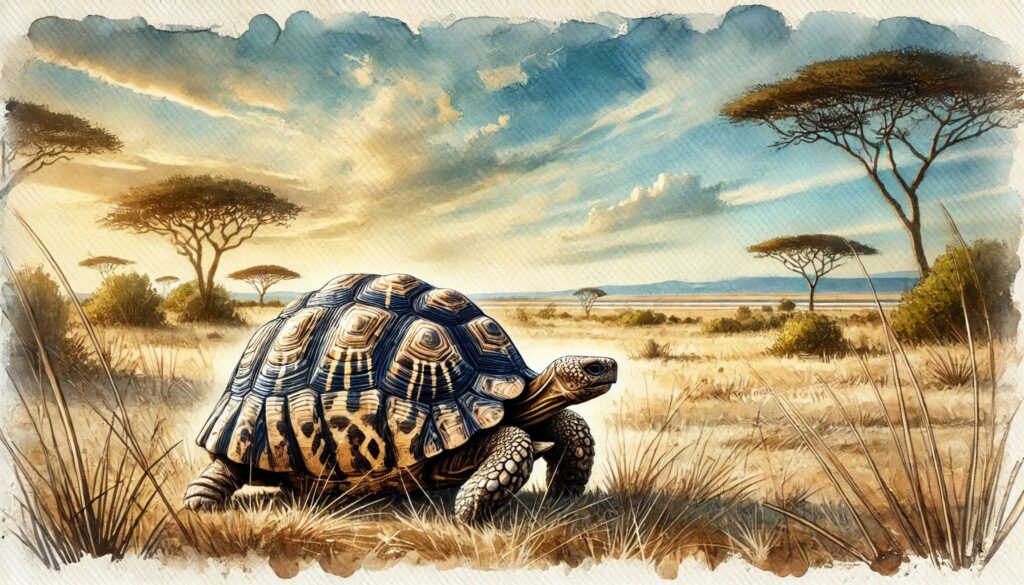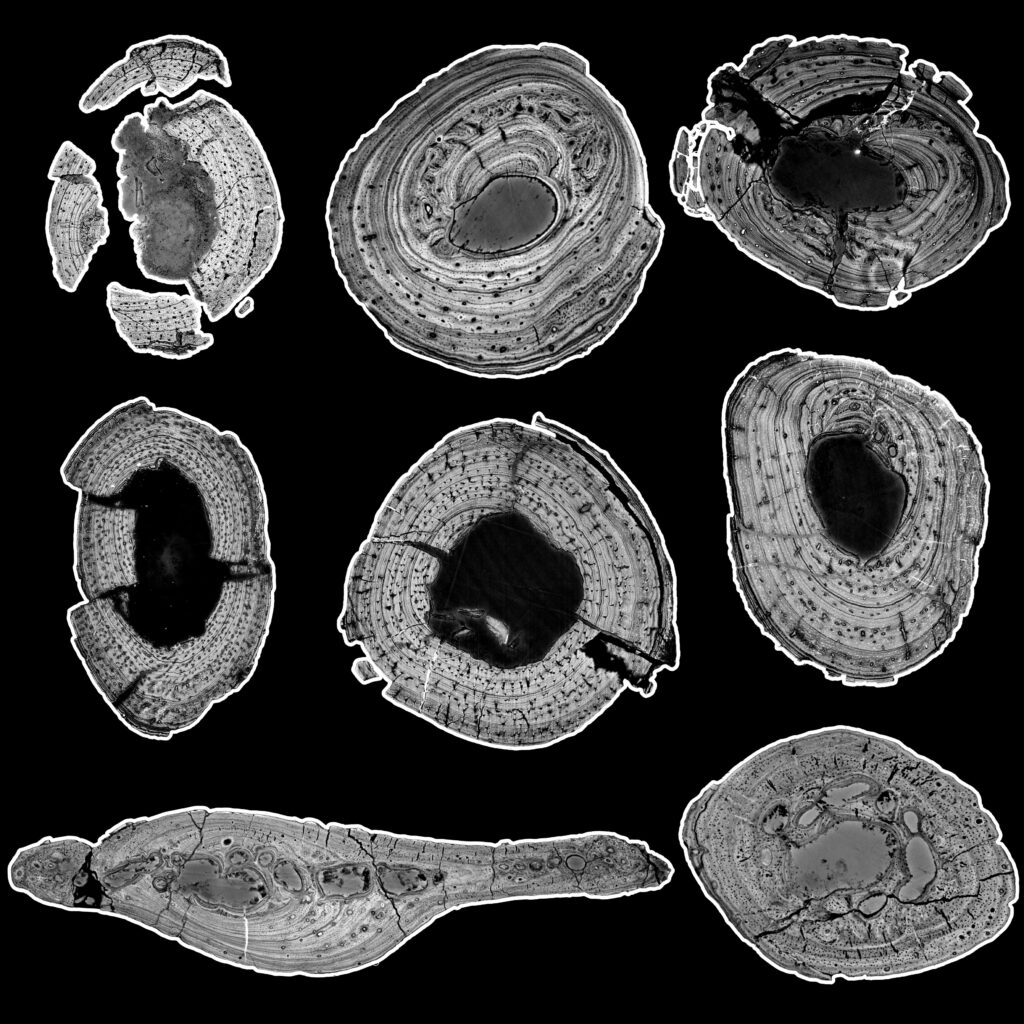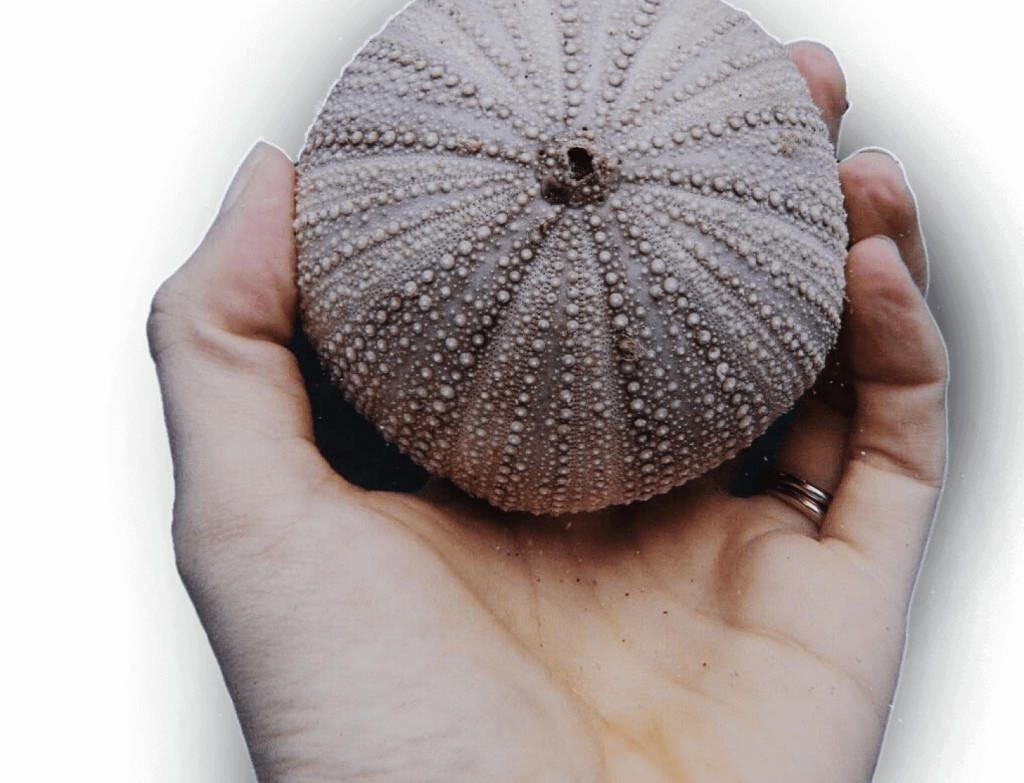Meet the back-vault heroes of Wits’ Earth Sciences
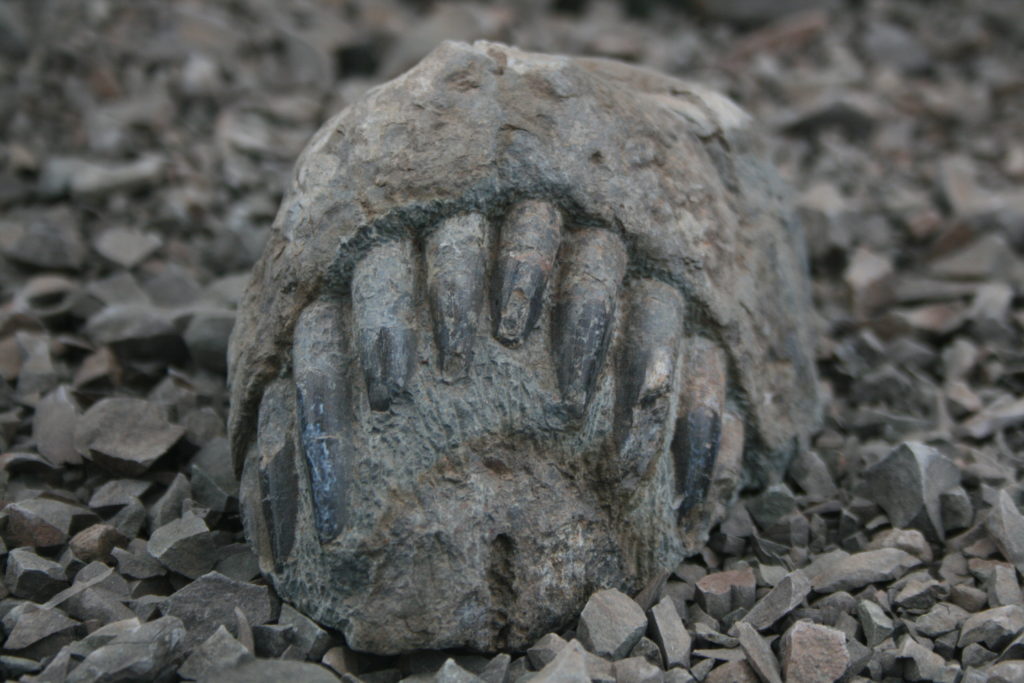
Small bites
- The Centenary Objects Exhibition & Public Lecture was launched as part of Wits University’s 100-year celebrations.
- The objects were sourced from collections within Wits’ Earth Sciences Cluster.
- Seven objects have been showcased so far.
In celebration of a hundred years, Wits dusts off treasures usually hidden from the public eye.
It is an object so valuable, that the public rarely gets to see it. But soon, they will. A piece of ochre just eight centimetres long will journey under tight security from the Iziko museums in Cape Town to Wits University’s Origins Centre in Johannesburg. Its value is in the series of faint scratches that criss-cross the artefact. Those scratches are believed to be the oldest known drawing made by the human hand.
The Blombos ochre, as it is known, is estimated to be 77 000 years old and was discovered in the cave with the same name back in 2011.
Those who will come to the Centenary Objects Exhibition & Public Lecture in September will have an opportunity to see the ochre, which will only be displayed for that day. They will also be able to listen to Marlize Lombard, the Professor of Stone Age Archaeology at the University of Johannesburg, speak about the early human mind that created this amazing find.
For nearly a year, the lecture series has been showcasing a series of iconic artefacts linked to Wits University, and it has drawn popular support. And it all started as an idea when the head of the Origins Centre, Professor Amanda Esterhuysen, looked at doing something tied to Wits University’s Centenary Celebrations. “We took the word ten out of centenary, and the whole principle was to show something people wouldn’t have seen,” she explains.
The unwritten rule is that all ten objects could not be a replica, the public had to see the real thing. Each object comes from collections within Wits’ Earth Sciences Cluster, and seven have been showcased so far.
The first was two 260 million-year-old Anteosaurus skulls presented by Professor Bruce Rubidge, Wits. These two early mammal relatives were discovered in what is now known as the Karoo. The juvenile skull on display is the only one of its kind in the world. “The adult was a nice specimen to have on display as people could touch it as it isn’t that fragile,” says Tammy Hodgskiss Reynard, the Curator at the Origins Centre museum.
The Taung Child was the second specimen in the series. This small Australopithecus africanus skull was discovered in 1924 and was responsible for changing our understanding of deep human origins. After the discovery of the skull near the town of Taung in the North West, Professor Raymond Dart successfully argued that Africa was humankind’s birthplace. Esterhuysen and Dr Bernhard Zipfel, Wit’s Curator, gave the joint lecture.
“There are little stories around the objects that are quite cool,” laughs Hodgskiss Reynard. The Taung skull has one of those stories that was told during the lecture. It goes like this. Dart and his wife Dora travelled to London with the Taung skull in 1931, and it was here that Dora left the fossil in a box in the back of a taxi cab. Fortunately, after opening the box and thinking the skull was that of a human child, the cab driver took it to a police station, where it was finally reunited with the Darts.
The third centenary object was Little Foot. This nearly complete Australopithecus fossil skeleton that dates to 3.67 million years was one of the harder displays to set up because of its size. The fossil’s discoverer Professor Ron Clarke gave the public lecture.
Honorary Professor Richard Viljoen presented the fourth object-a piece of gold-bearing quartz, one of the rarest forms of natural gold.
June’s objects were the mysterious giant Acheulean handaxes. Dr Matthew Caruana explained to the audience that no one is sure what these huge axes were used for, even though they have been found across the globe. Some of them are over 40 cm long.
The Gestoptefontein engravings were the focus of the sixth Wits Centenary Objects exhibition. These engravings etched on wonderstone were rescued when mining operations began on the farm Gestoptefontein, in North West. Lecturer rock art specialist Dr Jeremy Hollmann spoke of the latest theories attempting to explain the art’s purpose. These include possible links to rituals around female initiation.
All the speakers giving the lectures have a connection with Wits, either they are employed at the university or studied there. Sometimes selecting an object for the next lecture came down to a simple suggestion or the sudden availability of a speaker. This is what happened with the seventh in the series. “After the July lecture Stephanie Baker a PhD student from UJ, Matthew’s wife, came up and said why don’t we do Paranthropus,” says Hodgskiss Reynard.
Like so many objects, the Paranthropus specimens on display haven’t been seen before by the public. These small-brained hominids that wandered the southern African landscape 2 million years ago are not the rock stars of the palaeoanthropology world because they are considered not to be direct ancestors of humans. But as Baker explained, these human distant cousins lived just as interesting lives and were likely tool users, just like our ancestors.
So far, the response to the lectures has been phenomenal, says Esterhuysen. “We have had people with a broad range of interests attend the lectures, and our online footprint has grown.”
Some of the talks have attracted as many as 90 people, and a couple of die-hards aim to attend all ten lectures by the end of the year. However, Esterhuysen does admit that the tight monthly turnarounds of the exhibits did cause a couple of headaches. One of the challenges was organising for an expert to be available to speak about the object. But while it has been hard, it has also been a lot of fun too. “It got us into all sorts of spaces to see what was hidden there, and that was great,” says Esterhuysen. “We would set out on an outing and go into some store room expecting to see a single object, but then come out two or three hours later because we were suddenly distracted by several other objects along the way.”
The organisers have thought about continuing with the concept but not at the frenetic pace of the last couple of months. “We have had a few ideas of having a bigger exhibition where you’d have things on display. Like some of the sabretoothed cats found at the Cradle, they are so cool. And there could be a lecture series to go with it.” says Hodgskiss Reynard.
There are three more objects to go. The Blombos Ochre is billed for September and presented on Heritage Day, and Esterhuysen and Hodgskiss Reynard are still finalising the details and a speaker for the final object.
But the October object promises to be a cracker!
This object, hardly seen in public, is a clutch of massospondylus eggs believed to be between 200 and 183 million years old. Look closer, and there are tiny dinosaur embryos inside. As with the other objects, these eggs have a side story. It involves a famous palaeontologist who, for the sake of science, left his discovery for a future generation so they could reveal the wonder of what was inside those eggs. To hear that story, you will have to attend the October lecture.
For more information, go to the Origins Centre for tickets https://www.webtickets.co.za/v2/EventCategories.aspx?itemid=1458362651 and click Public Lecture Series 2022 for a schedule of upcoming objects.
Wits Centenary Objects Exhibition & Public lectures are sponsored by GENUS. GENUS is a collective knowledge hub and inclusive network for Palaeosciences in Africa. Dedicated to studying the origins of species, we see beyond the science to inspire researchers and citizens to find meaning in the past and inform our decisions for a better future.
